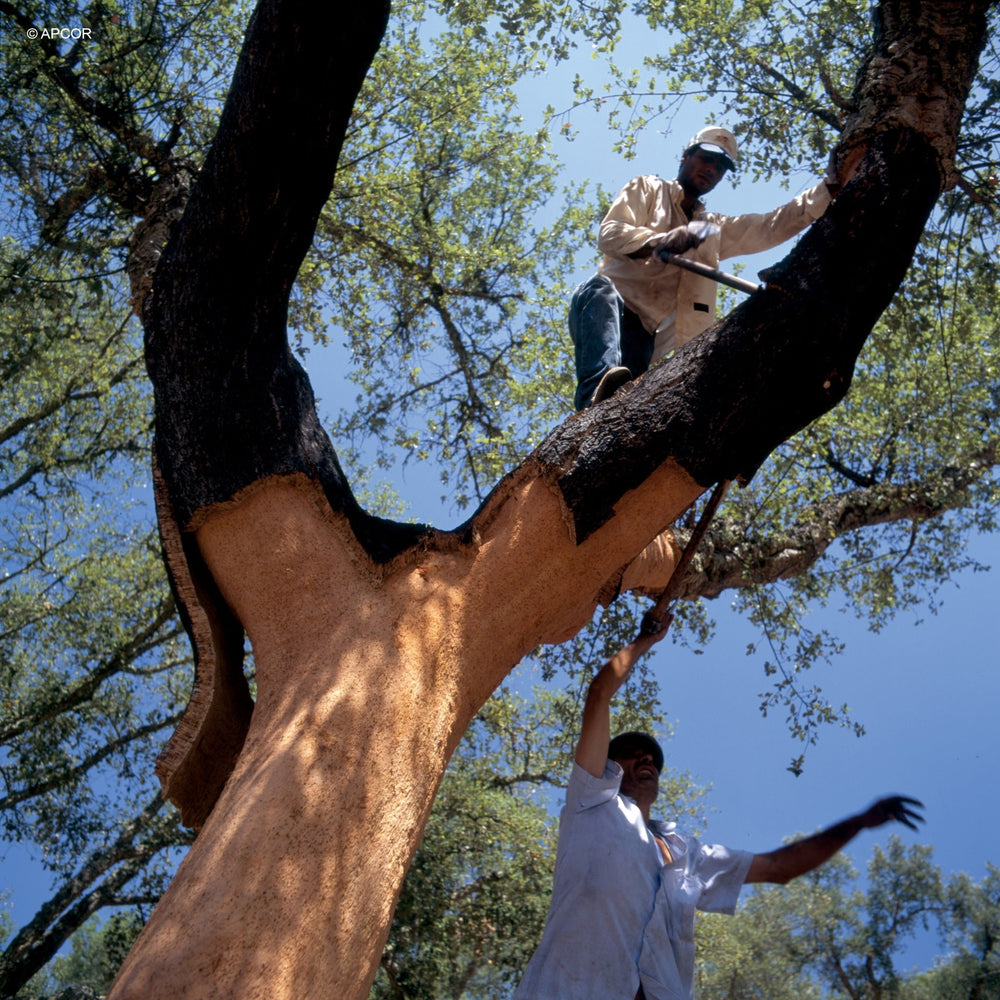April 21, 2023
From Bark to Bag: Cork Leather

One of my absolute favourite materials to work with is cork, and I often get the question "Why cork?"
There are several reasons. I first discovered cork leather at a local fabric shop in Ottawa - a natural coloured cork with gold flecks. What struck me first was how soft it was. I didn't know much about it, but I loved the look, and the sales person said it was easy to work with and very durable. I bought a small sample and took it home to test it out.

I added some to the base of some pouches to replace the canvas I had been using, and then set about designing a coin purse. The cork was easy to work with and the end result was beautiful.
I decided this was definitely something I wanted to include in my products, and set out to find a supplier. The only problem was I found it to be quite expensive to buy locally, and it wasn't always in stock. I knew that Portugal is known for their cork, and though what better place to look than at the source.
I've learned more and more about this amazing, renewable material over the years. Cork is harvested from the cork oak tree, found in the western Mediterranean, once every 9 years. Harvesting the cork does not harm the tree (it can survive with 50% of its cork removed from the trunk and branches). In fact, the act of harvesting the cork causes the tree to produce even more cork - up to 3.5 to 5 times more. To do this, they take in CO2 from the atmosphere, acting as a carbon sink. In fact, over 14 million tons of CO2 are fixed each year by the cork oak forests.
 People have been harvesting cork for thousands of years - artifacts have been found dating back to 3000 BC! And, it's still harvested the same way today.
People have been harvesting cork for thousands of years - artifacts have been found dating back to 3000 BC! And, it's still harvested the same way today.
It takes 20-25 years for the cork oak to start producing cork, and it will continue to produce good quality cork for 150 years. It's an ancient process done by experts - those who know how to harvest the cork without harming the tree. Using only an axe, they remove large sections of cork from the tree trunk and branches. The tree is then marked with the last number in the year - this tree will not be harvested again for another 9 years.
They stack the harvested cork in piles, exposed to the sun, wind, and rain, for at least 6 months. Once ready, the cork is boiled to soften it, shaved into thin sheets, and bonded to fabric or textiles. Finished cork leather is incredibly durable, and is water-resistant - the perfect material for bags!
Cork leather is available in a wide range of colours and designs, but I always go for the natural cork. I love how how it works with all our amazing fabrics.
Check out our cork products: Cork Coin Purses and Zipped Pouches.
Photos of cork harvesting courtesy of APCOR, Portuguese Cork Association.
Sources
APCOR, Portuguese Cork Association. 2023. www.apcor.pt/en/cork/
Gil, L. 2014. Cork: a strategic material. Frontiers in Chemistry, 2(16), 1-2
Gil, L. 2015. Cork: sustainability and new applications. Frontiers in Materials, 1(38), 1-3.
Tartaro, A.S., Mata, T.M., Martins, A.A., and Esteves da Silva, J.C.G. 2017. Carbon footprint of the insulation cork board. Journal of Cleaner Production, 143, 925-932


Leave a comment